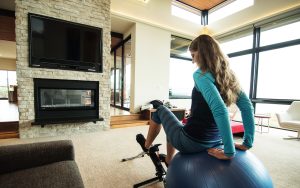Fitness and Activity Tracker Buyer’s Guide

When you’ve made up your mind to get fit, or you’ve decided to start a healthier routine, a fitness or activity tracker will get you off the couch, improve your endurance, and challenge you to improve your physical and mental health on a daily basis. There are many different exercise and health trackers to choose from. Below are all the available options so you can choose the tracker that’s right for you.
Table of Contents.
Choosing an Activity Tracker
Measuring Performance
Other features to look for
Connection hygiene
Select Activity Tracker
Everyone has a favorite activity or different activities they like to do for health or fun. You may like to run or take long walks, while your friends may like to hike or bike. Each activity tracker has basic features that instantly track your favorite activities and you can use that data to achieve your goals.
Daily tracking
When you first start exercising and you want to know how much exercise you’re doing each day, a fitness tracker is a tool that will give you that knowledge and motivate you to keep exercising. The basic features of an activity tracker include step tracking, distance tracking, and calorie tracking. Most trackers also include stair climbing and sleep logging as part of the basic features.
Tracking steps
The number of steps you take each day affects your fitness level, and it is recommended that you take 8 to 10,000 steps per day. With an activity tracker on your wrist, you’ll know how many steps you’ve taken, and you can track those steps for days, weeks, months, and years so you can see your progress. Some activity trackers are equipped with sensors that can track how many flights of stairs you climb or how many floors you climb each day. This data will help you decide more frequently not to take the elevator.
Distance
When you start a healthy new lifestyle, every step you take adds up. The exercise tracker will record the distance you walk each day so you can set a goal to meet or exceed that distance.
Garmin Forerunner 55 GPS Watch
Calorie burn
Getting fit is all about increasing your activity level, but the number of calories you consume and burn each day will also contribute to your weight loss or healthy lifestyle. One of the basic features of an exercise tracker is calorie counting, which allows you to see exactly how many calories you’re burning during each workout. With this knowledge, you can adjust your food intake or see where you can challenge yourself to burn more.
Sleep Quality
Sleep is one of the most important parts of a healthy lifestyle. Getting the right amount and quality of sleep can be a challenge, and wearable activity trackers can provide you with the amount of time you sleep, the amount of time you sleep deeply, and the amount of time you sleep lightly by monitoring your sleep.
Performance Activity Trackers
After you’ve used an activity tracker for basic workouts and improved your fitness level, you may want to upgrade to a performance activity tracker. These advanced exercise trackers are perfect for those who work out regularly, prepare for competitions, or just need more advanced features than the basic tracker.
Heart Rate Monitoring
Heart rate is important when exercising. The difference between a fat-burning workout, a workout that burns a lot of calories, or a workout that exhausts you because you’ve exceeded your peak effort depends on your heart rate. Monitoring your resting heart rate and your heart rate during exercise will give you a better idea of your overall health. There are many options for trackers. One example is the Apple 5 series, which includes a Health Canada certified ECG. Another is the Gamin Vivosmart 4, which includes a wristband pulse oximeter to measure blood oxygen levels. For more information see the Connected Health section below and our article “Why Heart Rate Matters”.
Speed
For people who are training for a marathon or other fitness event, an activity tracker that monitors your speed is important. You can set goals to improve your speed and look at the data to see how it improves over days or months.
Global Positioning System (GPS).
If you have a track you like to run on, or you stumble upon a new track you like to bike on, the GPS on your activity tracker will record your location, display the track on a map, and give you data to decide if you want to go back there. Going to the middle of nowhere? Consider a new tracker that connects to additional satellites, not just GPS. some Fitbit (e.g., the Fitbit Ionic smartwatch) and Garmin (Herald 235 and 645; Phoenix Wire) can also collect data from Russian GLONASS satellites for better location monitoring. There are even trackers (e.g., Garmin Forerunner 945,Fenix 5,5x and 5S line) that can connect to the European Galileo positioning satellite, which became operational in 2016.







